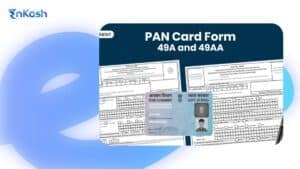Introduction
Fintech in India has grown from a niche idea into one of the most active industries in the world. From UPI payments to buy-now-pay-later loans, almost every Indian today interacts with some form of fintech. But behind the flashy apps and smooth customer experience is a web of rules and approvals that every startup has to deal with before it can legally operate.
Unlike many other businesses, fintech is not something you can just start with a shop license or GST registration alone. Because it directly deals with people’s money and sensitive data, regulators keep it under close watch. Depending on the business model, whether it’s lending, payments, wallets, or account aggregation, different fintech licenses in India are required.
For founders, this can feel overwhelming. The rules are scattered across RBI circulars, data privacy laws, and security standards. Yet getting the right business licenses for fintech startups is not optional. Without them, partnerships with banks and NBFCs don’t work, investors hesitate, and in some cases, operations may even be shut down.
RBI License for Fintech
If a fintech touches money movement, deposits, lending, or customer funds in any meaningful way, it usually falls under the Reserve Bank of India’s umbrella. RBI is focused on systemic stability and consumer protection, so most core fintech activities need its nod before going live at scale. Think of the RBI as the traffic controller for the financial highway; it decides who can drive, at what speed, and under what safety rules.
At a high level, here’s where an RBI license for fintech typically applies:
Lending and credit models
- If the business is underwriting loans, buying loan books, or carrying credit risk, it’s usually in NBFC territory.
- Variants like BNPL, digital credit lines, or co-lending still trace back to the same core question: who owns the risk and how is the loan booked?
- Many early-stage players start with a partnership model while preparing for their license.
Payments and collections
- Handling merchant payments, settling funds, or operating checkout infrastructure typically needs a Payment Aggregator permission.
- Issuing or operating wallets, prepaid cards, or gift cards falls under PPI norms.
Even if the product looks “just like software,” once it touches customer money flow, RBI supervision kicks in.
Data-sharing rails
- If the model relies on consent-based financial data flow across banks, insurers, and investment platforms, it enters the Account Aggregator framework.
- This isn’t “payments” or “lending,” but it’s still a regulated activity with strict consent and data handling standards.
How does this link to common fintech models?
- NBFCs: These are the backbone for digital lending, BNPL, and embedded credit. If the plan is to own a loan book or price risk directly, an NBFC route is the standard pathway.
- Payments: Startups building checkout, marketplace collections, payout infrastructure, or wallet products sit in the Payment Aggregator or PPI bucket. The bar here has gone up, with clearer eligibility criteria and oversight.
- Other RBI-touch points: Cross-border remittances, issuer/acquirer roles, and prepaid instruments each come with their own rulebook. Even if a startup is “just” an interface, the moment it holds, routes, or settles funds, licensing and compliance become central.
NBFC License for Fintech
If a fintech wants to lend money and earn from interest, it’s stepping into NBFC territory. The moment the business takes credit risk on its books, an NBFC license becomes the main license to have. This includes lending apps, BNPL players, embedded credit at checkout, and platforms that buy or manage loan portfolios.
When does a fintech need an NBFC license?
- Lending or BNPL in your name: If loans are issued under the company’s name, and risk sits with the company.
- Funding loans or buying receivables: If the business funds those loans or purchases them to earn returns.
- Sharing risk in co-lending or FLDG: If the startup is sharing losses or playing a meaningful role in underwriting, regulators treat it as more than “just a marketplace.”
What does the NBFC licensing process involve?
Set up the company and capital: Incorporate the entity and meet the minimum net worth requirements for the NBFC category. Keep funds clean and well-documented.
- Promoters and directors: They should have a clean track record, relevant experience, and pass “fit and proper” checks.
- Business plan that’s real: Explain the product, target segments, how underwriting works, how collections will be handled, and what tech and governance controls are in place.
- Policies ready on day one: Credit, KYC, fair practices, collections, outsourcing, grievance redressal, and data/information security policies must be in place. These should be board-approved, not just draft PPTs.
- Compliance and risk setup: Appoint a compliance lead, define internal audits, fraud monitoring, management information system (MIS) reporting, and a plan to meet recurring filings.
- Capital and liquidity: Show how the business will fund growth, provision for losses, and survive stress. Lending always needs more capital than founders expect.
- After approval: Be ready for regular returns, prudential norms, NPA recognition, exposure limits, and scrutiny of your partnerships and contracts.
Why do many early lending startups partner with an existing NBFC?
- Speed: Licensing takes time. Partnering helps launch faster, test cohorts, and refine underwriting.
- Capital: Using a partner’s balance sheet reduces the need to block large capital early on.
- Compliance muscle: A licensed partner already has governance and controls, which lowers early mistakes.
- Confidence with banks and investors: They prefer working with setups that already meet regulatory standards.
Two practical paths
- Partner-first: Start with a tech-led model, originate through a licensed NBFC partner, prove unit economics, and apply for your license once ready.
- License-first: If the core value is credit-led and profits depend on interest spread, invest early in getting the NBFC license and build strong compliance from day one.
Payment Licenses: PPI, Payment Aggregator, and Account Aggregator
Payments look simple on the front end, but the backend is tightly regulated. If a fintech touches customer funds, moves money for merchants, or handles financial data flows, it likely needs one of these licenses.
PPI License India (Prepaid Payment Instruments)
Think of PPIs as “stored value” products: wallets, prepaid cards, gift cards, meal cards. Customers load money first, then spend.
Who needs a PPI license in India
- Wallet apps that let users add money and pay online or in-store
- Co-branded prepaid cards and gift cards issued to consumers or employees
- Niche use-cases like campus cards, fuel cards, or meal benefits
What to keep in mind
- Clear KYC is non-negotiable. Low-KYC wallets face tighter limits
- Funds must be safeguarded as per guidelines, with proper reconciliation.
Use cases and load/spend limits are defined; you can’t treat a wallet like a bank account
Good fit for
- Consumer apps with frequent micro-payments
- Loyalty or rewards products that convert points to spendable value
- Controlled environments like campuses or corporate programs
Payment Aggregator (PA) License
Payment aggregators collect money on behalf of merchants and settle funds with them. If the product powers checkout, supports multiple payment methods, and handles merchant settlements, it typically falls under PA rules.
Who needs a PA license
- Checkout platforms offering cards, UPI, netbanking, EMI, and wallets
- Marketplaces and platforms that collect from buyers and settle to multiple sellers
- Any software that “sits in the middle” of customer payments and merchant settlements
What to keep in mind
- Eligibility has tightened: net worth, governance, and risk controls matter
- Settlement timelines, nodal accounts, and dispute handling must be watertight
- Strong fraud monitoring, chargeback handling, and grievance redressal are expected
Good fit for
- Startups building merchant acceptance and collections at scale
- Platforms with split settlements or marketplace flows
- SaaS products that bundle payments plus invoicing/reconciliation
Account Aggregator (AA) License
Account Aggregators don’t move money. They move financial data with user consent, securely. They help a customer share data from banks, mutual funds, insurers, and more with a lender or fintech app.
What AAs do
- Provide a consent layer so users control who sees their financial data, for how long, and for what purpose
- Fetch and share data from financial information providers (FIPs) to financial information users (FIUs) in a standard, secure format
Who fits where
- AA entities: need the license to operate the consent and data flow layer
- FIUs (like lenders, wealth apps): consume data via AA rails for underwriting or advice
- FIPs (like banks, AMCs, insurers): provide customer data to the AA network
Why is it important
- Faster and more accurate underwriting for credit
- Higher-quality KYC and risk checks without manual paperwork
- Better user control and auditability of data sharing.
Compliance Around KYC and Aadhaar eKYC
In fintech, onboarding is where trust begins. Clean KYC keeps fraud in check, builds confidence with partners, and saves a lot of future firefighting. If this step is weak, it shows up later as disputes, failed audits, and blocked growth.
Aadhaar eKYC Access: The Essentials
Aadhaar eKYC is a quick, digital way to verify identity using UIDAI-approved methods. It’s widely accepted and great for scale, but it’s not open to everyone by default. Only eligible, approved entities can access Aadhaar-based eKYC directly. Others typically integrate through licensed partners or use alternatives like CKYC, video KYC (V-CIP), or PAN-based flows.
What this means day to day
- Issuing wallets or stored value? Expect strict KYC rules, with different limits for minimum vs full KYC users.
- Onboarding for regulated products like lending or mutual funds? Requirements are tighter and must match the sector’s rulebook.
KYC Service Provider Registration: when it applies
If a startup provides KYC as a service to other regulated entities, collecting documents, running checks, or doing V-KYC, it usually needs formal authorization under the relevant regulator’s framework. Many early-stage teams avoid this complexity by partnering with already-approved KYC providers.
Who sets the rules
- UIDAI: Sets how Aadhaar data can be used, consented to, stored, and secured. Any Aadhaar eKYC flow must follow these rules.
- Sector regulators (RBI, SEBI, etc.): Define what counts as valid KYC in their domains. The KYC for a wallet issuer and a mutual fund platform may look similar, but the acceptable methods and checks can differ.
Examples
- Mutual fund onboarding: Typically follows CKYC with PAN validation, photo, address proof, and sometimes in-person verification or V-CIP. Aadhaar can help, but the flow must align with securities norms.
- Prepaid wallet onboarding: Often starts with lighter KYC and lower limits, then upgrades to full KYC for higher limits and features. Aadhaar eKYC speeds this up if the issuer or partner is approved.
How to keep KYC strong and scalable
- Write a clear KYC policy: What documents are accepted, how verification happens, exception handling, and re-KYC timelines. Get it board-approved and keep versions tracked.
- Layer your checks: Documents + face match/liveness + device signals + fraud/bureau databases where relevant.
- Keep airtight audit trails: Store consent proofs, timestamps, IPs, and reviewer IDs. These save the day during disputes and audits.
- Train for edge cases: Name spelling differences, local address formats, and minor mismatches. Have a standard resolution path to avoid blocking genuine users.
- Plan upgrades: Make it easy for users to move from minimum to full KYC as they hit limits or unlock new features.
Data Privacy and Security Compliance for Fintech
In fintech, handling money and handling data go hand in hand. A payment app that works flawlessly will still lose users if it leaks Aadhaar details. A lending platform may disburse loans quickly, but if word gets out that customer data isn’t safe, growth stalls overnight. Banks look for it before signing partnerships, investors make it part of due diligence, and customers remember lapses for a long time. Privacy and security aren’t add-ons; they’re what make people comfortable enough to use your product.”
Data Privacy Laws: DPDP in Plain Terms
India’s Digital Personal Data Protection (DPDP) Act is the law that sets the ground rules for how fintechs handle customer data. At a practical level, it comes down to a few habits:
- Collect only what you need: If you’re offering a wallet, ask for wallet-level KYC. If you’re lending, explain upfront why bank statements or salary slips are necessary.
- Be transparent: Put it in simple words inside your app or website what you collect, why you need it, who you share it with, and how long you’ll keep it.
- Respect customer rights: Give users a way to see their data, fix mistakes, or request deletion where it applies.
- Don’t hoard data forever: Holding on to unused personal data is like storing explosives in your office you don’t know when it might blow up. Set timelines and stick to them.
- Watch your partners: If third-party vendors handle data on your behalf, you’re still responsible. Contracts, audits, and oversight are part of the job.
- Prepare for the worst day: Breaches happen. What matters is how quickly you detect, contain, and communicate.
Getting these basics right pays off quietly:
- Banks approve partnerships faster.
- If something breaks, damage is limited and recovery is smoother.
- Trust builds over time, and in financial services, trust is often more valuable than speed.
Security Certifications: What PCI-DSS and ISO/IEC 27001 Mean
PCI-DSS (Payment Card Industry Data Security Standard):
- Who needs it: Any fintech that directly stores, processes, or transmits card numbers, payment gateways, processors, or card-linked apps.
- How to make life easier: If you avoid storing raw card data and rely on tokenization through a compliant partner, your scope becomes lighter.
- What it looks like in practice: Controlled access to systems, strong encryption, proper network segregation, detailed logs, and regular testing.
ISO/IEC 27001 (Information Security Management):
- Who needs it: Almost any fintech that handles personal or financial data. Many banks and enterprise clients expect this certification during onboarding.
- What it covers: Risk assessments, access control, secure coding practices, vendor due diligence, and an incident response framework.
How to make certifications meaningful:
- Do a gap check first. Fix basics like password hygiene, patching, and secrets management.
- Build habits, not paperwork, automate where you can, so controls don’t feel like a burden.
- Train your team so they understand why security matters. People follow rules better when they see the point.
- Treat audits like health checkups, regular and preventive, not once every few years.
Tax and General Business Registrations
Before scaling, get the basics tidy. Clean registrations and on-time filings make life easier with banks, enterprise clients, marketplaces, and investors. It’s not glamorous, but it saves headaches later.
GST Registration: the practical stuff
- Most fintechs need GST registration early because they provide taxable digital services and collect fees.
- Why it matters: Banks and larger clients usually ask for a valid GST number before onboarding. It also keeps invoicing, credits, and taxes straightforward.
Simple habits that help:
- Use GST-compliant invoices with the right GSTIN, HSN/SAC codes, and place-of-supply.
- File monthly on time to avoid late fees and interest.
- Automate filings where possible to reduce manual errors.
Other common business licenses for fintech startups
- Shops & Establishments: If there’s a physical office, most states expect this. Banks often ask for it during business KYC.
- Professional Tax: State-specific, applies to employers and employees in several states. Keep registrations and payments regular.
- Local trade/signage permissions: Needed if running any customer-facing center.
- IEC (Import Export Code): Useful if there are cross-border services or partnerships, including certain payment flows.
- Optional but helpful: DPIIT Startup recognition if eligible. It won’t replace core licenses, but it can help with certain benefits.
Banking and payments hygiene
- Open a dedicated current account early. Keep business funds separate from personal funds and keep payouts separate from operating expenses to simplify reconciliation.
- If running marketplace-style flows, use the right account structures like nodal or escrow-like setups as applicable and maintain clear settlement trails.
- Reconcile frequently: payouts, refunds, chargebacks, TDS/TCS adjustments. Weekly discipline prevents month-end scrambles.
Tax operations to set up from day one
- Invoicing stack: Auto-generate GST-compliant invoices and credit notes. Sync with accounting so numbers match.
- Input tax credit: Match purchases with the GST portal, track blocked credits, and handle reversals cleanly.
- TDS/TCS: Build rules into payouts and vendor payments so deductions happen at source. Don’t wait for year-end corrections.
- Advance tax: If revenues are rising, plan quarterly payments to avoid penalties.
- Be audit-ready: Keep contracts, SOWs, vendor tax details, and reconciliations neatly filed. A monthly close calendar with checklists helps.
What banks and investors look for
- Valid GST registration and a clean filing history
- Revenue in books matches GST returns consistently
- Clear fund segregation and documented settlements
Up-to-date state registrations for where the business operates
- No unresolved tax notices sitting idle
- The basics to keep your compliance clean and stress-free
Register early, file on time. Backdated cleanups cost time and money. - Keep one source of truth: accounting, billing, and bank data should match. Reconcile every month without fail.
- Document everything: contracts, SLAs, settlement reports, tax workings. Due diligence becomes faster.
- Assign ownership: Even with an external CA, make one person internally responsible. Clear ownership prevents drift.
Fintech API Compliance in India
APIs are the plumbing of modern fintech. Payments, KYC, credit bureaus, banking rails, and fraud checks most of it run over APIs. That also means compliance isn’t optional. When an API touches regulated data or moves money, the obligations travel with it.
Why APIs are important in fintech
- They connect to core rails: UPI, cards, netbanking, AEPS, BBPS, FASTag, and more.
- They power onboarding: PAN validation, CKYC, Aadhaar-based flows via approved partners, V-CIP.
- They enable risk and credit: Bureau pulls, bank statement analyzers, and cashflow data via Account Aggregators.
- They drive operations: Settlements, refunds, chargebacks, reconciliations, and reporting.
What fintech API compliance in India means
- Contracting and authorization: Use only authorized providers for regulated functions. Keep contracts, scopes, and responsibilities crystal clear.
- Purpose limitation: Call APIs only for the stated, consented purpose. No silent enrichment, no scraping beyond what’s allowed.
- Consent design: Capture consent in plain language. Store proofs of what was consented, by whom, when, and for how long.
- Data minimization: Request only the fields necessary for that transaction or use case. Avoid broad “catch-all” payloads.
- Secure transport and storage: TLS for every call, token-based auth, short-lived credentials, and no secrets in code or logs.
- Audit trails: Log requests and responses with identifiers and timestamps, minus sensitive data. Retain as per policy.
- Vendor and sub-processor controls: If a partner calls other downstream APIs, ensure they meet the same standards. Responsibility doesn’t stop at your first hop.
- Rate limits and throttling: Prevent abuse, brute forcing, and accidental floods. Align with SLAs so production doesn’t fail under peak loads.
- Error handling and fallbacks: Design for degraded modes queue, retry with backoff, switch to alternate rails where permitted.
- Data residency and retention: Respect storage location rules and delete data after the retention window closes.
Special attention areas
- Aadhaar-linked APIs: Access only through eligible, approved setups. Follow consent, masking, storage, and audit rules strictly.
- PAN, CKYC, and V-CIP: Align with sector-specific onboarding norms. Keep strong liveness/forgery checks and store artifacts securely.
- UPI and payments: Follow the respective operating guidelines on authentication flows, dispute handling, settlement timing, and data sharing limits.
- Account Aggregator data: Treat AA flows as consent-first and time-bound. Don’t reuse data beyond the consent window or stated purpose.
- Card data: If raw card data ever touches your systems, PCI obligations apply. Prefer tokenization to reduce scope.
Operational tips for clean API governance
- Maintain an API registry: Who you call, why, data fields used, retention, and owners. Update it when scopes change.
- Secrets management: Rotate API keys regularly. Use vaults, not environment files or chat tools.
- Sandbox first: Test against partner sandboxes and mock edge cases before going live.
- Monitoring and alerts: Track latency, error rates, timeouts, and unusual traffic patterns. Alert on anomalies.
- Version control: Pin to stable versions. Plan migrations early when providers deprecate endpoints.
- Access control: Limit who can generate or view production credentials. Enforce least privilege.
- Business continuity: Have backup providers or alternate rails for critical flows, where policy allows.
- Compliance reviews: Run quarterly reviews of consents, scopes, retention, and vendor attestations. Fix drift proactively.
How to Get a Fintech License in India: Process and Challenges
Getting licensed in India isn’t a single-form exercise. It’s a sequence: define the business model, map the regulator, prepare for eligibility, file a strong application, and build compliance as a daily habit. Here’s a clear path that works in practice.
Step-by-step: from idea to approval
Define the model clearly
- What are you doing: lending, payments, data-sharing, or a mix
- Where does money flow, who holds it, and who takes risk
- What data is collected, from whom, and for what purpose
Map the primary regulator
- Lending and payments usually lead to RBI permissions
- Data-sharing via AA rails involves the AA framework and ecosystem roles
- Securities or insurance use cases may trigger SEBI or IRDAI touchpoints through partners
Pick the right license path
- Payments: Payment Aggregator or PPI, depending on whether you collect/settle funds or issue stored value
- Lending: NBFC if you own credit risk or the loan book
- Data-sharing: Account Aggregator if you operate consent rails; FIUs/FIPs integrate into the AA network without becoming AAs
- Check eligibility and readiness
- Net worth, promoter background, “fit and proper” criteria
- Governance: independent directors where needed, board committees, documented policies
- Systems: KYC, risk, information security, grievance redressal, outsourcing oversight
Prepare the application pack
- Incorporation documents, shareholding, and source of funds
- Detailed business plan with product flows, risk controls, and technology stack
- Policy suite: KYC, AML, fair practices, collections, information security, outsourcing, customer grievance, data privacy
Evidence of capital, audited statements, and compliance structure
File and engage
- Submit a complete, consistent application
- Respond promptly to queries, supply clarifications with evidence
- Keep records tidy and version-controlled
Build “day-two” compliance
- Set up filings calendar, regulatory reporting, and audit plan
- Appoint accountable owners for risk, compliance, and information security
- Run internal tests on reconciliation, dispute handling, and incident response
Common challenges and how to handle them
Net worth and capital requirements
- Reality: Capital gets locked up and needs buffers beyond the minimum
- What helps: Plan capital runway for 12 to 18 months, not just licensing; align investor timelines with regulatory milestones
Long approval timelines
- Reality: Reviews can take longer than expected
- What helps: Start with partnerships where possible, keep the product in pilot, and use the time to harden controls and dashboards
Documentation depth
- Reality: Superficial policies slow down approvals
- What helps: Draft policies that match your actual systems; attach process flows, sample logs, and evidence of dry runs
Governance maturity
- Reality: Early teams underinvest in compliance and internal audit
- What helps: Create small but independent functions; define escalation paths; involve the board in quarterly reviews
Tech and security controls
- Reality: Gaps in access control, logging, and vendor oversight are common
- What helps: Implement least-privilege access, centralized logs, secrets management, encryption at rest and in transit, and vendor reviews
Smart workarounds for early stages
Partner with licensed entities
- Lending: originates through an NBFC partner while providing underwriting and collections
- Payments: go live via a PA partner before pursuing your permission
- KYC/data: integrate through approved providers to stay compliant without building everything in-house
Scope your MVP
- Narrow segments, simple flows, clean reconciliation
- Build strong metrics: approval rates, cohort loss curves, settlement SLAs, dispute closure times
Show your work
- Maintain artifacts: audit trails, consent proofs, exception logs, policy training records
- These shorten diligence with banks and investors and make approvals smoother
Conclusion
Building a fintech in India means matching the right licenses to the actual business model. There is no single approval that covers everything. What’s required depends on whether the product moves money, issues stored value, shares financial data, or takes credit risk. Teams that plan for this early earn trust faster with banks, investors, and customers.
- Map money and data flows: Identify who holds funds, who takes risks, and what data is processed.
- Get only what’s needed to launch safely: NBFC for lending, Payment Aggregator for collections, PPI for wallets, and AA for consented data sharing.
- Make onboarding strong: Clean KYC, clear consent, and audit-ready records.
- Protect data by design: Practical privacy practices, sensible retention, and proven security controls.
- Keep compliance basics tight: GST setup, state registrations, reconciliations, and timely filings.
- Build APIs responsibly: Authorized integrations, minimal data pulls, strict key management, and clear deletion rules.
FAQs
1. Why is compliance important for fintech startups in India?
Compliance ensures that the business operates within regulatory frameworks set by RBI, SEBI, and tax authorities. It builds trust with banks, investors, and customers, which is essential for scaling in the financial sector.
2. What are the core regulatory registrations needed for a fintech startup?
Typically, fintechs require GST registration, Shops & Establishments registration (for offices), and professional tax registrations, depending on the state. Additional licenses may apply based on business models, such as a PPI license for wallets or NBFC registration for lending.
3. How does the DPDP Act affect fintech businesses?
The Digital Personal Data Protection Act requires fintechs to collect only necessary personal data, explain its use clearly, safeguard it, and delete it when no longer needed. Non-compliance can lead to penalties and loss of customer trust.
4. Do all fintechs need PCI-DSS certification?
Only those handling cardholder data directly need PCI-DSS. Fintechs using tokenization or relying on compliant partners can reduce their scope, but they must still ensure security across systems.
5. What financial reporting obligations apply to fintech companies?
Fintechs must maintain proper books of accounts, file GST returns, pay TDS/TCS where applicable, and ensure consistency between invoices, accounting, and bank reconciliations.
6. How can a fintech ensure smooth relationships with banks and investors?
Keeping registrations valid, filings up to date, funds segregated, and compliance records well-documented helps banks and investors onboard fintechs faster and with greater confidence.
7. What happens if a fintech delays compliance or misses filings?
Delays often result in penalties, interest charges, and regulatory scrutiny. They also create red flags during audits, due diligence, and funding rounds.
8. Is DPIIT startup recognition mandatory for fintechs?
No, it is optional. While it offers benefits such as tax exemptions and easier access to certain schemes, it does not replace mandatory licenses or compliance requirements.
9. What are common GST compliance mistakes fintechs should avoid?
Frequent errors include using the wrong HSN/SAC codes, missing input tax credits, and delays in monthly filing. Automating GST invoicing and reconciling with the GST portal regularly can prevent these issues.
10. How often should fintechs conduct compliance and security audits?
At a minimum, fintechs should conduct annual audits for data security (ISO/IEC 27001, PCI-DSS, etc.) and quarterly internal compliance reviews. Early-stage startups benefit from monthly reconciliations to keep records audit-ready.
11. Do fintechs offering lending services always need an NBFC License?
Yes, if the fintech is lending directly and taking credit risk. However, if it only acts as a Digital Lending Service Provider (DLSP) in partnership with a regulated NBFC or bank, it may not need its own NBFC license.
12. How important is assigning internal ownership for compliance?
Very important. Even if a company hires external consultants or CAs, one internal team member should be accountable for compliance. Clear ownership reduces the risk of delays and overlooked filings.












